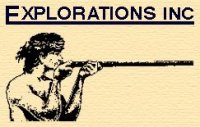Explore Cuba with a private custom tour!Design your own custom itinerary for travel to Cuba with private guide and transportation.
November 9, 2017: Revised USA Cuba Travel Rules
Bottom line is while independent travel to Cuba for tourism has been limited, we can customize private itineraries that are still legal and operating for USA citizens! We hope we can help you explore Cuba. Please contact us early in your planning to help decide what type of travel plans may be best for you.

Private Tour Highlights include:
- People-to-People interaction and meaningful exchanges with locals.
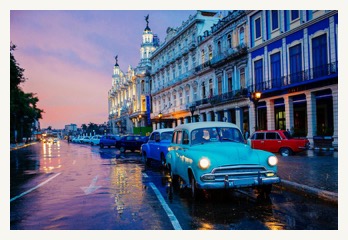
- Stay in downtown Havana or the Miramar and Vedado neighborhoods.
- Day tours and stays in other Cuban cities.
- Daily activities arranged based on your interests that qualify as legal travel under USA regulations.
- Reservations and transportation arranged for meals when desired.
- Private, daily local guide service.
- Transportation including airport transfers.
- Cuban visa acquired and appropriate forms supplied and copies kept as per USA regulations.
- Round-trip airfare from USA to Cuba can be arranged.
- Mandatory Cuban medical insurance (included in air ticket).
- Great accommodation options in major hotels, small Boutique hotels, and private apartments and villas.
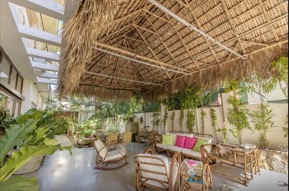
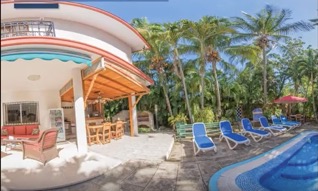
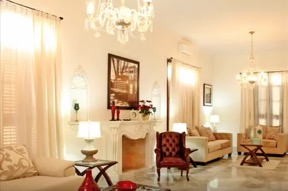
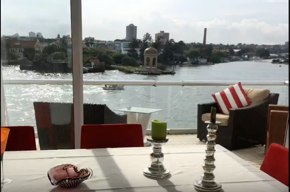
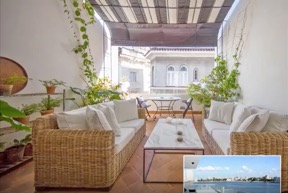
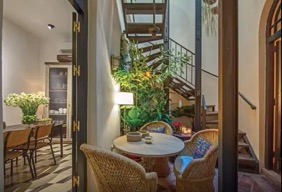
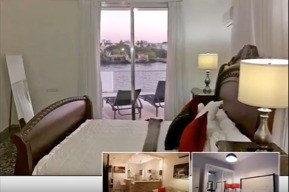
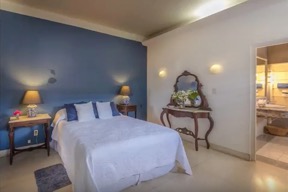
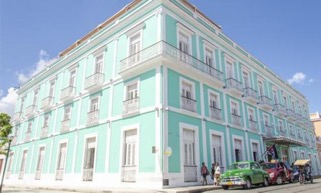
Tour options:
The daily itinerary is customized based on your interests. From nature to culture activities - you would let us know in order to arrange your private tours. Our local guides know many “off-the-beaten-path” sites to visit.
From a lush countryside of dramatic limestone mogotes and tobacco-dotted valleys to the faded facades of Old Havana, Cuba offers a compelling glimpse at a colorful country rapidly entering a new era. Let travel experts deal with the details while you explore the many facets of Cuba. Whether you are a small group who wants to delve into the art and cuisine of Cuba, or a couple who wants to join locals for a birding adventure, we can create your ideal expedition.
Tour options could include:
- Focus on minority religious groups & attending services alongside locals who practice a variety of faiths.
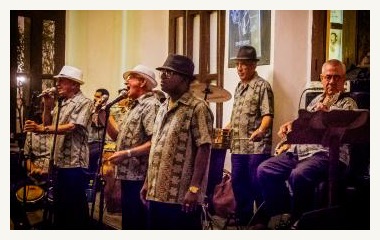
- Meet Cuban classic-car enthusiasts & visit garages to swap stories about favorite restoration projects.
- Trace Hemingway’s life in Cuba, where he lived while writing seven books, including The Old Man and the Sea, A Moveable Feast & Islands in the Stream.
- Delve into Havana with special-access visits to art galleries, dance studios, schools & museums.
- Explore private enterprise options, including the booming private restaurant scene (ideal for foodies!) with ample time to chat with Cuban entrepreneurs.
- And of course, many who have ever wanted to travel to Cuba has envisioned themselves sipping a famed mojito or Cuba libre. After all, what could be more Cuban than rum except for perhaps a cigar. Note that August 16 marks National Rum Day!
SAMPLE, 6-day private tour in Havana
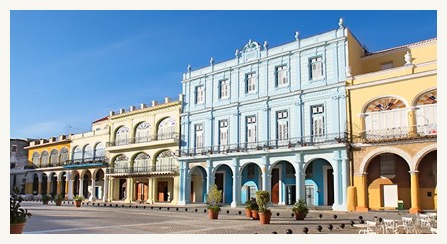
Fly to Havana, where we are met by our Cuban guide. Hop into vintage classic American cars. Cruise along the Paseo del Prado in Centro Habana passing a variety of landmarks, including the Bacardi Building, Central Park, the Grand Theater and Capitol. Stop at the 17th Century Morro Castle for sweeping views across Havana Bay. Cap-off our introduction to Cuba at Sloppy Joe’s Bar, where history and cocktails easily mix. Sloppy Joe’s became a haven for American tourists during U.S. Prohibition, hosting celebrities such as John Wayne, Spencer Tracy and Clark Gable. Enjoy dinner tonight at a privately owned restaurant (paladar). Paladars offer the best variety of fresh, inventive cuisine. Plus, our time here is the ideal opportunity to chat with this new generation of entrepreneurs about this “new” Cuban economy. Tonight at dinner we also meet and enjoy chatting with a Cuban dignitary about the changing face of Havana. Looking for an incredible night out in Havana? Consider spending your night at Fabrica de Arte Cubano (FAC), where Cuban youth and famous artists gather. Inside FAC there are art galleries, a theater, concert venues and quiet venues to enjoy a drink and chat. Cocktails are at your own expense. (D)
DAY 2: Exploring Havana
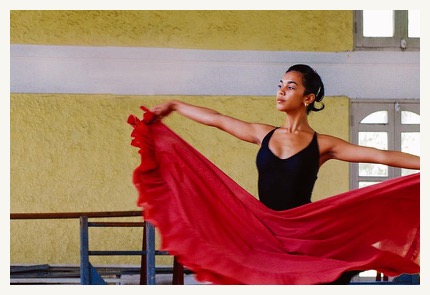
DAY 3: Day Trip to Soroa & Vinales
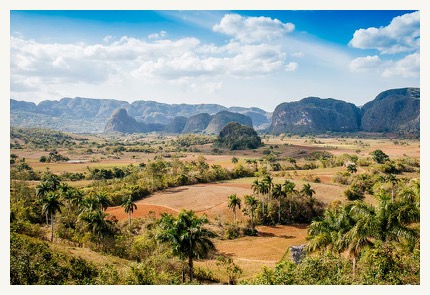
DAY 4: Hemingway’s Havana
Venture out of the city to the seaside village of Cojimar, which served as the inspiration for Ernest Hemingway's The Old Man and the Sea. After seeing his monument, sample drinks at one of Hemingway’s favorite bars, La Terraza. You may also join a local chef for a cooking lesson before lunch at Ajiaco. This paladar renowned for their ajiaco stew, a Cuban staple created using farm-to-table ingredients. Continue paying homage to “Papa” Hemingway at his former home Finca Vigia, preserved as it was on the day of his death, and discuss his life with Cuban experts and researchers. Savor the hospitality and warmth of those who have but a smile and delicious home cooked meal to share. Although the embargo has limited what the residents of Cuba have at their fingertips, there is no denying that their food is as comforting and as tasty as any offered in a home kitchen in America. Your guide will act as interpreter and help you ask all the burning questions you may have about living in Cuba. The people of this country speak freely and share openly. Your meal is homemade, authentic Cuban food that the locals enjoy on special days with the family. After-all, it isn't every day they get to chat up an American! Head to Casa Blanca and the ramparts facing the Havana Bay for the cannon-firing ceremony. If dinning with a Cuban family is not on your bucket list we can also provide you with great suggestions for an evening on your own. (B,L,D)
DAY 5: Havana’s Traditions
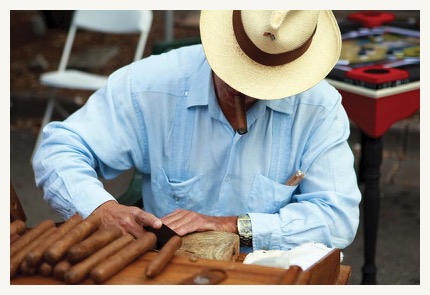
DAY 6: Depart Cuba
Sadly, all good things must come to an end. Our Cuba tour ends as we return to the airport for your flight back to the U.S. (B)
COSTS:
Once you approve your custom itinerary, we can provide and exact tour cost. Costs will depend on the number of travelers in your party, type of accommodations chosen, day tours, travel dates, etc.
However, for the Sample 6-days itinerary above as a private tour, we suggest budgeting $4,000 per person.

![]()
SAMPLE, 10-Day private tour in Havana
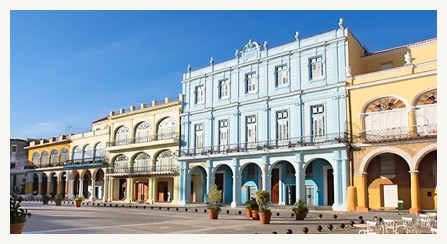
DAY 1: Arrive Miami
Our Cuba people-to-people travel program begins in Miami with a briefing and welcome reception before an overnight at the Cambria Suites Miami Airport.
DAY 2: Miami / Cienfuegos
Early this morning, return to the airport and board our flight to Cuba. Depending on your departure day, you will travel to either Camaguey, Santa Clara or Cienfugos. Enjoy a performance by the Cienfuegos choir. Enjoy a walking tour of Cienfuegos’ city center, where wide avenues lead to the historic center, a UNESCO World Heritage Site. Walking through the city today makes for a captivating experience, with colonial buildings — such as the Tomas Terry Theater, public squares and monuments, some of which are whitewashed and others splashed with bright Caribbean colors. Overnight at Hotel La Union or similar. (D)
DAY 3: Trinidad
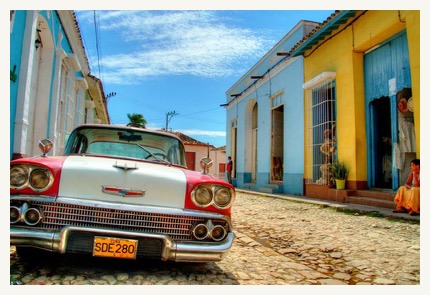
DAY 4: Topes de Collantes
Enjoy a spectacular morning in the Sierra de Escambray mountains at Topes de Collantes National Park, one of the best places to enjoy Cuba's natural beauty. Wet winds coming off the Atlantic make the north face of the mountains a refuge for plants and animals, including Cuban trogon, the national bird of Cuba. After learning the history of Cuban coffee, relax over a cup of coffee while chatting with your local guide about efforts to protect the region. After lunch visit a modern art museum, seeing pieces by important artists. (B,L,D)
DAY 5: Zapata Wetlands / Bay of Pigs
The Zapata Peninsula encompasses a national park protecting Cuba’s most important wetland area. It is also a UNESCO Biosphere Reserve closely resembling the Florida Everglades. There are 900 species of flora, 171 species of birds (18 endemics), 31 species of reptiles and many mammal species calling the Zapata Wetlands home. Join Orlando Ramirez, a local farmer, to search for the world’s smallest bird, the bee hummingbird. On the Bay of Pigs, discuss the importance of the wetlands with a local environmentalist. Spend tonight at Hotel Playa Larga or similar. (B,L,D)
DAY 6: Bay of Pigs / Soroa
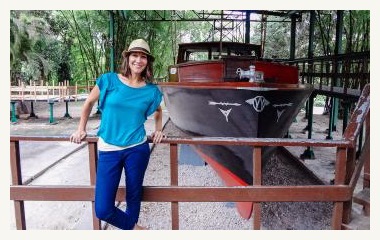
DAY 7: Soroa & Viñales
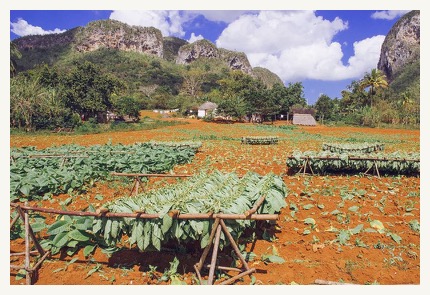
DAY 8: Soroa / Las Terrazas / Havana
Survey an orchid garden with staff from the University of Pinar del Rio. Meet local naturalists, business owners and farmers in the planned community of Las Terrazas, a UNESCO Biosphere Reserve with just 1,000 residents that was founded on a green ethic. The self-contained community is surrounded by foliage thick with indigenous species, including hibiscus, teak and ebony trees that were part of a reforestation project. Stop at Cafe de Maria for a cup of locally grown coffee and chat with the family who runs the business. Drive along the oceanfront Malecon Avenue, seeing Revolution Square. Spend two nights at the Parque Central or similar. (B,L,D)
DAY 9: Havana
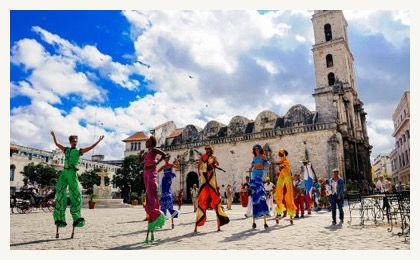
DAY 10: Havana / Miami
Transfer to the Jose Marti Airport for our charter flight to Miami, where you connect with flights home after 8 p.m. (B)
COSTS:
For independent private tours: Once you approve your custom itinerary, we can provide and exact tour cost. Costs will depend on the number of travelers in your party, type of accommodations chosen, day tours, travel dates, etc.
For open group tours: Prices start at $4,798 per person. Please add $490 for airfare & departure tax and $90 for Cuban visa. See below for departure dates:
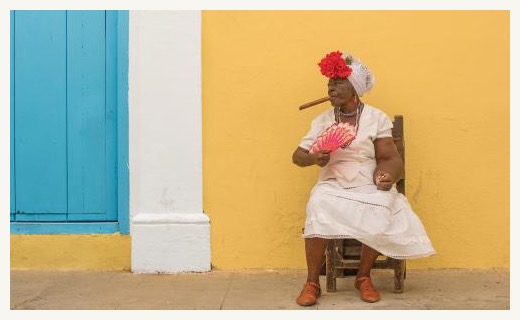
January 4, 2018
January 11, 2018
February 1, 2018
February 22, 2018
March 8, 2018
March 29, 2018
April 5, 2018
April 19, 2018
May 3, 2018
May 17, 2018
June 7, 2018
September 27, 2018
October 25, 2018
November 8, 2018
Cuba travel regulations for USA citizens
Effective as of November 9, 2017:
https://www.treasury.gov/resource-center/sanctions/Programs/Documents/cuba_faqs_new.pdf
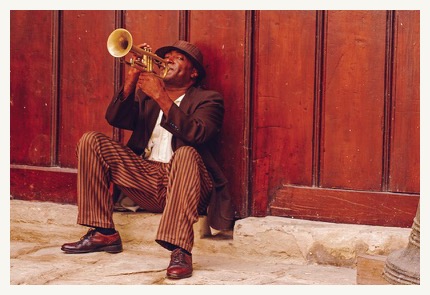
For independent travel to Cuba, USA citizens need just a valid US passport to travel along with the required travel documents to be provided and records kept for minimum of 5 years. Arrangements are made with an organization licensed by the US Treasury Department's Office of Foreign Assets Control to engage, organize and conduct authorized people-to-people travel to Cuba.
CUBA
Cuba is the largest island in the Antilles and the Caribbean. It is an ontrincate archipelago comprising the main island (about two-thirds the size of Florida), the Isle of Youth, and about 4,195 key (cayos) and islets.
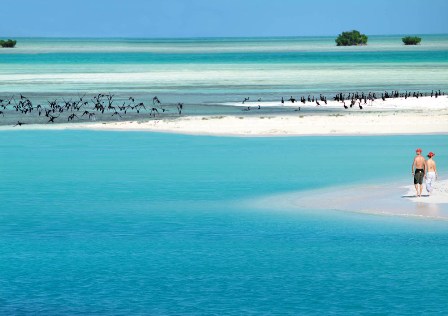
Much treasure lies beneath the unpolluted waters of the Cuban archipelago, which offers through-water visibility of 30 to 40 metres. Home to more than 500 varieties of fish, crustaceans, sponges, mollusks and coral, Cuba’s ecosystem is one of the most treasured in the Caribbean. And the wrecks of several 17th- and 18th-century Spanish galleons carrying valuable cargo provide treasure-hunting of a different sort.
Cuba has well preserved ecosystems, variegated landscapes and a vast array of flora and fauna make Cuba an exceptional Caribbean destination for nature lovers. Four per cent of the world’s land species live on the Cuban archipelago. It is home to some 6,700 species of higher plants (about half of which are native) as well as 14,000 species of invertebrates and 650 vertebrates—including 350 bird species. Among Cuba’s countless gems are the world’s smallest frog (Eleutherodactylus limbatus, only 12 millimeters long) and tiniest bird (Mellisuga helenae—the bee hummingbird, some 63 millimeters long).
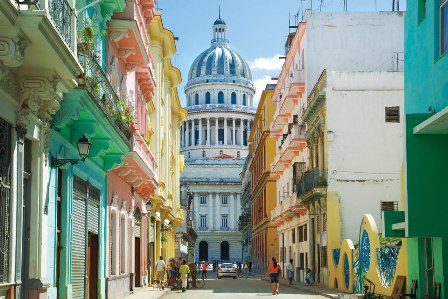
From the ocean, enormous fortresses welcome a visitor; and once walking the streets a traveler can see the vitality, in addition to the usual noise, its cobble stone avenues, its columns, balconies, arches and its different constructions. All of these areas have become a space for a photo or simply a stop in front of such well conserved beauty. It is a trip back in time where each stone and construction has much to say, many secrets to unveil.
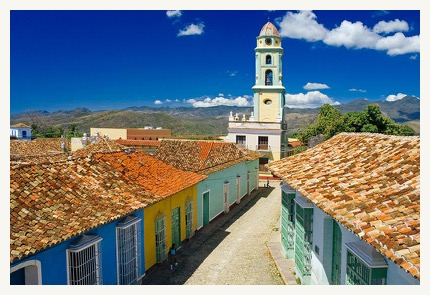
Speaking of the culinary, Cuban food is a combination of African, Spanish, Chinese, Italian and indigenous or native ingredients and recipes. A true mix of cultures for the palate. The geographical features of the country favor the abundance of seafood, cattle and sheep or pig meat. Various fresh vegetables, legumes, tubers and fruits are also available. The national dish is rice, black beans, seasonal salad, roast or juice pork and fried plantains. Throughout the island there are also the "Paladares", or private restaurants and cafes assuring visitors unforgettable moments.
Click here for a nice 6 minute video on Cuba Tourism![]()
CUBA FAQ
PASSPORT & VISA
Each traveler must be in possession of a valid, signed passport that will remain valid for at least six months beyond completion of the entire trip. At this time visas ARE required for US citizens traveling to Cuba.
Previous to arriving in Miami you will be sent an application (with instructions) that is MANDATORY for ALL travelers to fill out. Once all travelers have filled out the application you will send them back to us with copies of your passports, to which we will forward to the Cuban ground operator to be processed. When you have sent back your completed visa application, your visa will be shipped to you.
Participants holding all other passports should check with the consulate for regulations and instructions.
HEALTH REGULATIONS
No vaccinations are required for entry into Cuba or return to the USA.
WEATHER
The Cuban climate is mild subtropical. Thanks to its proximity to the Tropic of Cancer and its narrow configuration, Cuba receives a refreshing action of trade winds and marine breezes. Average Fahrenheit temperatures are as follows: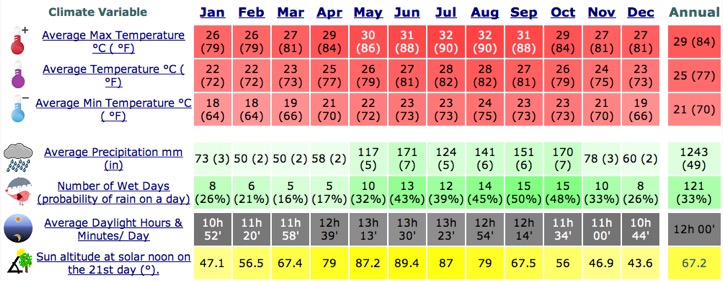
PACKING & CLOTHING
GENERAL SUGGESTIONS
Please travel as lightly as possible and plan for tropical weather. Sports or casual clothes are more useful. Comfortable walking shoes are sa must.
Be sure not to pack sharp items in your hand luggage. Pack things such as scissors, nail clippers, pocketknives or knitting needles in your checked luggage.
Always carry your travel documents, medication, jewelry, traveler's checks, keys and other valuables in your hand luggage. Items such as these should NEVER be packed in luggage that you plan to check.
Bring all personal-care items with you. Many products can be bought, but purchasing them can be inconvenient. We suggest you carry toilet tissues with you on excursions.
VALUABLES
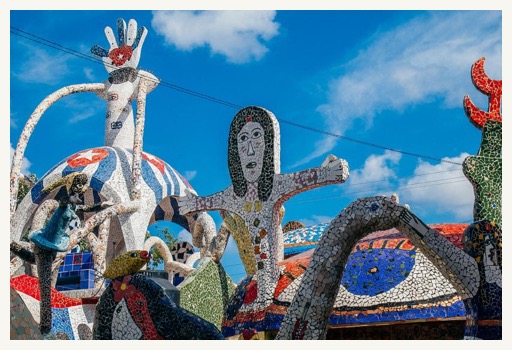
HEALTH REQUIREMENTS
For safety reasons it is requested that physical disabilities of any kind be advised at time of reservation. It is understood that participants requiring special attention or treatment will be traveling with their personal escorts.
CURRENCY
The currency in Cuba is Cuban Pesos. It is possible to convert dollars to Cuban Convertible Pesos (CUCs) at the airport. There is a kiosk before leaving the baggage area where money can be converted. The tour leader will assist in this as well. If you do not convert then, there are many places to convert money - for example, hotels, and the local Cuban guide will assist in this.
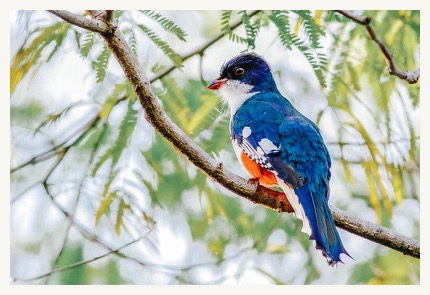
Credit cards are accepted on board (American Express, Visa & MasterCard) cruise including gratuities to the crew. With regard to the use of Credit or Debit cards in Cuba the following applies: No card issued by a bank that has any connection with the United States will be accepted in Cuba, although MasterCard now say said it will lift a block on U.S. bank-card transactions in Cuba after March 1st 2015:
Under the new (Jan 16, 2015) regulations, American travelers to Cuba may be able to use an American credit card. However, it is not clear how long it will take for banks to begin offering the service. There are few ATMs in Cuba, and many establishments do not have the means to process credit card payments, so cash will be king for some time to come. You may also take pounds and euros, which get a better exchange rate in Cuba than the United States dollar.
LANGUAGE
You local guide will speak English unless another is specified. The primary language in Cuba is Spanish and your tour guide is fluent in both Spanish and English.
ELECTRICITY
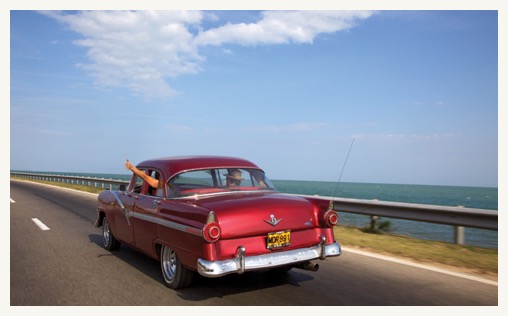
The Cuban power outlets are most often the US American flat pin types. In general the voltage in Havana is 110V AC 60Hz, but some new hotels have 220V AC 60 Hz. It is recommended to use a surge protector for electronic equipment, laptops, etc.
INTERNET & PHONE
Internet access is becoming more common. More locations in the cities have WIFI and prepaid internet cards are available. Check with your phone service provider as several offer coverage in Cuba.
TIME ZONE
Cuba is on Eastern Standard Time. When it is noon in New York and Miami, it is also noon in Havana, Cuba.
Return to the top of this webpage :)
